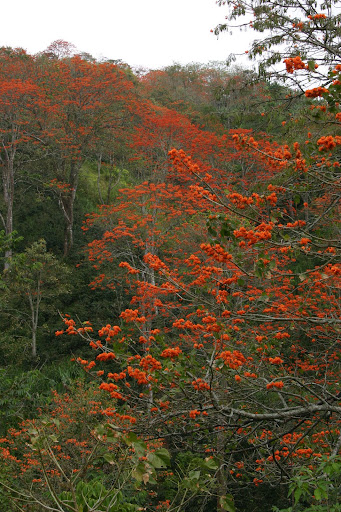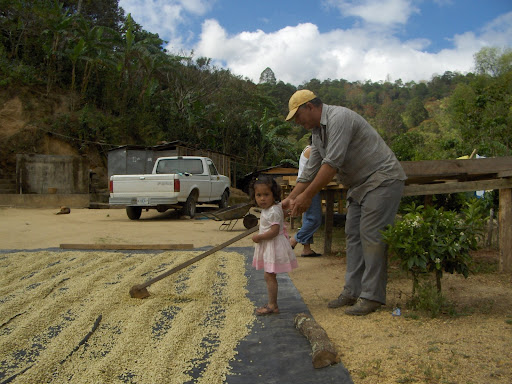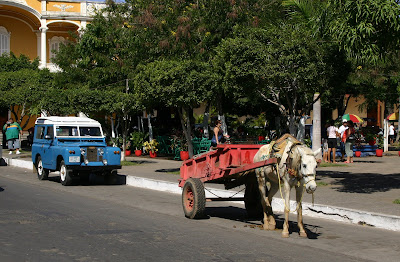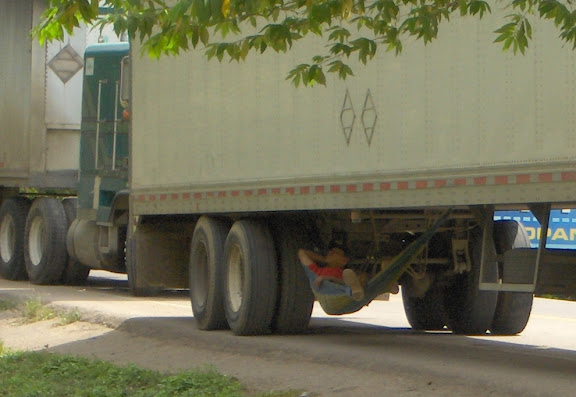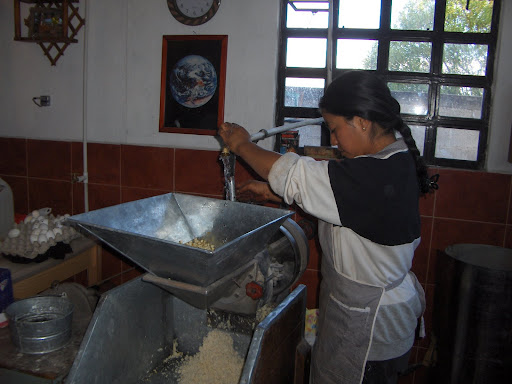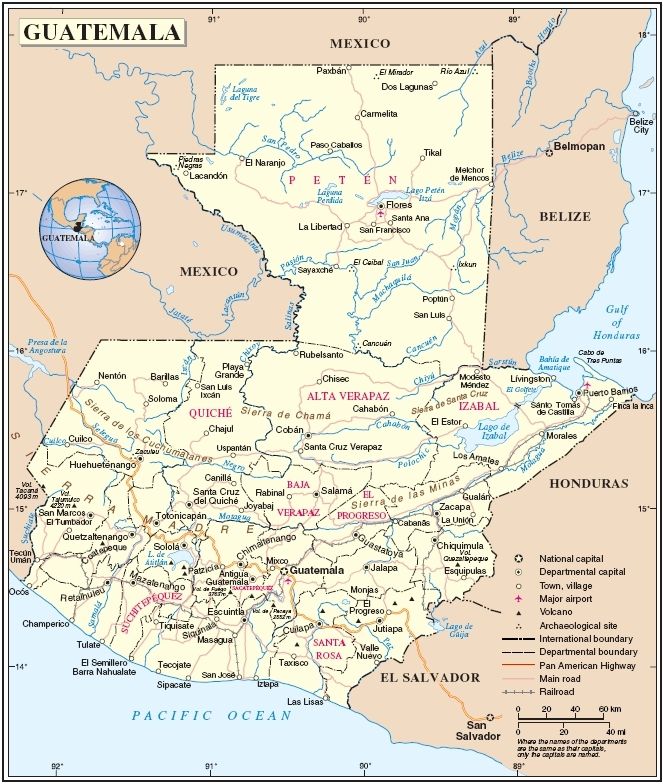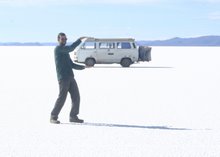 take us to South America. We’ve sent a bunch of e-mails to shipping companies, and received several negative responses, but are waiting to hear from 3 companies that said they thought they could probably send us and would let us know how much, and when. Fingers crossed!!
take us to South America. We’ve sent a bunch of e-mails to shipping companies, and received several negative responses, but are waiting to hear from 3 companies that said they thought they could probably send us and would let us know how much, and when. Fingers crossed!! In the meantime, we’re getting the van ready to be shipped. Douglas built a wooden partition that separates the front of the van from the back, which will hopefully keep our stuff from getting stolen in transit. We’re hoping to ship it via RoRo, or roll-on, roll-off, which entails giving our keys to the port guy, who then drives the van on and off the boat. This means that the van will probably be unlocked while it voyages across the ocean, and it’s very common for things to mysteriously disappear from the van. Hopefully the wooden partition will prevent that.

Building it was a bit of an adventure. There’s no Home Depot in Costa Rica, but there was a hardware store, with wood, just a few blocks from our hostel. We got directions from the door guard – he told us not to walk directly to the store, but walk down to Avenida Central, over several blocks, and then back up to the same street, because there was a bad section between us and the hardware store. We did as he suggested, buying some avocados and green mangoes from street vendors along the way (side note – the green mangoes are very small and hard – unripe – and they are delicious!! They’re really tangy, and cut into small pieces, with salt and lemon, they make a wonderful salad). The vendors were very nice and insisted on picking out perfectly ripe fruit, asking when we were going to eat them, today or tomorrow. The hardware store was small, with wires strung across the ceiling so they could hang everything that wouldn’t fit on the shelves – extension cords, hammers, whatever. The wood was kept around the corner, in a separate location. We picked out our wood, in 4 meter sections, 5 pieces, and then carried it back to the hostel, getting lots of strange looks along the way.
Our hostel was kind of peculiar, filled with 20-something backpackers who seemed to do nothing but sit by the pool (even though the pool was closely surrounded by high concrete walls topped with razor wire, not so scenic) and drink. No one would talk to us – I’m sure we were ‘the weirdos in the van’! 8)
We’ve made a couple of side trips, to escape from the city. We went up to Volcan Barva, where we camped near the ranger station and hiked in the woods. It was absolutely heaven up there, cool and misty with great views, giant plants, and hummingbirds the size of my thumb. We saw all sorts of excellent plants, and came back to San Jose feeling very refreshed, ready to deal with the shippers again.

We also spent a night in Palo Verde, tons and tons of birds!

The city has been good for getting things done, though. It’s an interesting mix of Central America and America, with lots of American franchises and fancy cars, mixed with Latina fashion and fresh mangoes. Tonight we went to a movie (as a post-dentist pick-me-up, more on that in a second) out at a multiplex, and we could have been in a mall in Anytown, America. Cinnabon, McDonalds, Burger King, Subway, Timberland shoe store, Benetton, you name it, it was in the mall. The only giveaway that we were in Central America was the Carrion. Yes, Carrion. It’s a big chain of department stores, and there are lots of adverts about how they’re first in fashion. That one won’t be coming to any English-speaking country anytime soon…
So, the dentist. Many of you will remember that just before we left, one of my molars was bothering me, and I saw 4 dentists about it, whose reaction ranged from “gee, I dunno” to “all of your teeth are cracked and you need a root canal right now! It’ll cost $1200” to “you don’t need a root canal, your tooth looks just fine to me, why don’t you just wait and see” to “I think you clench your teeth, here’s a bite guard”. Well, many hundreds of dollars later, here I am in Central America and my tooth still hurts. No, it hurts *more*. Luckily, this summer I worked on researching a book on dental tourism (many countries have established an industry catering to patients who can’t afford dental care in their own country (read, ‘merica). In places like Hungary and, ta da, Costa Rica, the standard of care is high, and the prices are low), and I knew that there were some excellent dentists in Costa Rica. So I contacted the editor of the book (thanks, Joe) and asked for a recommendation. I saw Dr. Marco Peralta today, and he took an X-ray like the other dentists had, and it showed nothing, like theirs had. Then he did something novel, and actually looked at my tooth. And lo and behold, there was a very small cavity just at the gumline that the other 4 dentists somehow hadn’t seen. He showed it to me on a nifty little camera-TV setup, then quickly fixed it, and I left the office $40 whole dollars poorer. I won’t even tell you how much the &%$#$% ‘merican dentists cost me. And today’s dental visit was one of the most efficient and painless I’ve ever had – thank-you Dr. Peralta! So far, the tooth feels much better – a little sore from being drilled and prodded, but the dull ache that’s been bothering me for months is *gone*. That’s all I have to say about ‘merica’s much-touted standard of care.
A couple of funny incidents: tonight, taking the cab home from the cinema, the cabbie had no idea where to go. We were maybe a 10-minute cab ride from the center, and our hostel’s near the big road that runs down the middle of town. I gave him the address, and he wandered in circles, eventually stopping to ask some other cabbies. Several of them stood outside the car, waving their arms and giving directions – mostly repeating the same set of directions multiple times, which were, as they always are in Central America “la vuelta, y entonces RRRRRRRRecto” which basically means turn here, and then go straight ahead!!! Somehow, every single time we ask for directions in CA, we are told to go RRRRRRRecto. It’s hilarious. Of course, everything is straight ahead. What makes the cabbie’s lostness even funnier is that San Jose is organized on a grid system, with streets running north-south, and avenues running east-west. What’s more, they are numbered. We wanted 5th Avenue, between 36 and 38th streets. So, how did he get to be a cabbie here…?
Yesterday, when we were driving through a smallish town called Heredia, on our way back from Volcan Barva, we stopped to check our e-mail (hoping for something from the shipping companies). There was lots of parking space near the Central Square, but there were signs saying you needed a ticket to park there, and it wasn’t obvious how you got this ticket – did you buy it monthly? Did you pay at some station we couldn’t see? We ended up in a parqueo, as usual, and ran our errands. On our way back to the car, we asked a vegetable vendor about the signs – what type of ticket did we need, and where could we buy it? He pointed up the street and said ‘In the florist shop, of course!’ Of course!!
So, yes, we are enjoying Costa Rica. It’s one of our favorite countries so far. It’s easy to disfrutarnos here (one of my favorite Spanish words – disfrutar, to enjoy. Doesn’t it just sound like what it is?? It always makes me think of Carmen Miranda taking off her big fruit hat - dis-fruitar). The people are super-friendly, and the parks are stupendous. We’re chomping at the bit to get to South America, though….






